Year 2025
Let me tell you the story of a dystopia from the near future.
A new geological period has started and the recovery of our planet (if achievable) has gone into the number one priority of humanity. Because of this, one of the points of the agreement is banning human presence in Antarctica. Antarctica needs to heal, like if a fictional dome would surround its periphery. This critical situation has been caused due to a series of reasons that had and has a consequential impact in Antarctica, like the CO2 production, the interchange logistics of scientists and population and the aim to protect one of the richest biodiversities of the planet, which turns out to be critically endangered.
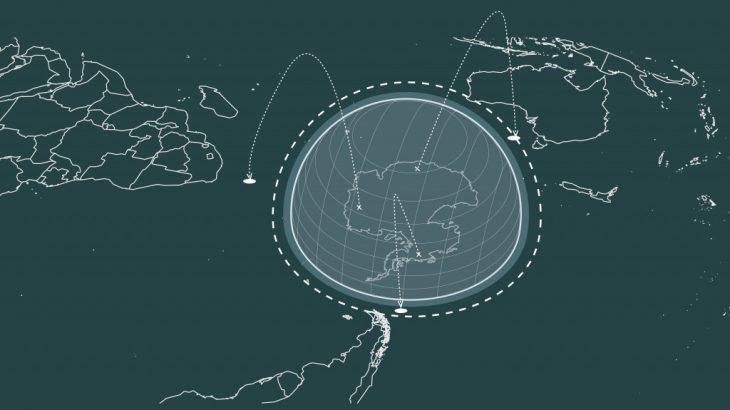
Fictional Dome
The new metabolism of Antarctica.
Which is the actual Metabolism of Antarctica? In a very simplified way, people and resources are transferred/travel to the different bases/touristic points (science/tourism). The proposal is the creation of 3 buffers, interchange links and human based operations positioned on a strategic point between the continents that filters all that information and people that goes to Antarctica. Like this, the transformation becomes very relevant and the impact to Antarctica gets minimized. Scheme – ideogram – diagram – logogram. From the detailed to the specific, getting to compress the importance of the proposal into a simple logogram.
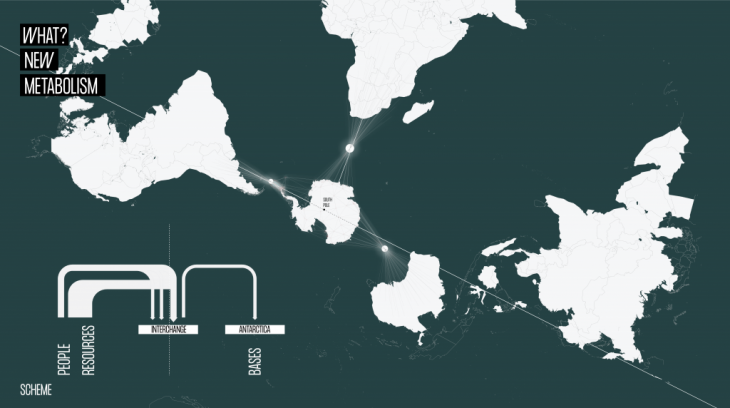
Scheme
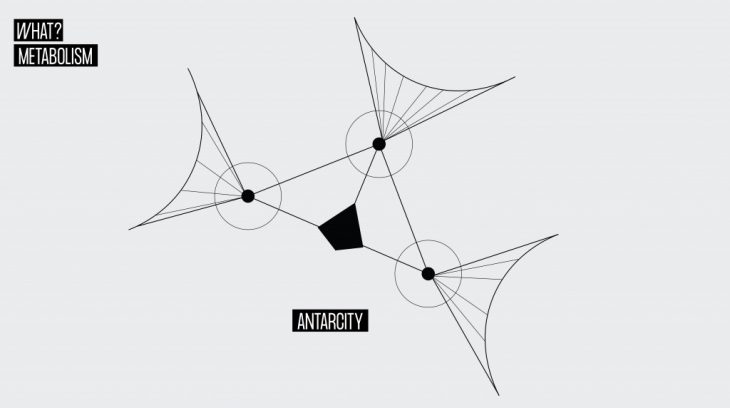
Ideogram
How the process of “cleaning” Antarctica would take part?
We have considered three different scenarios in a timeline that goes from 2020 to 2050. In a first stage approach the intervention would ‘eat’ the logistics of Antarctica and the airports and bases located closer to the South Pole would disappear. At the same time these logistics elements would start appearing in our first floating island, being for now an interchange point of access to Antarctica and storage. The scientific research could still happening through the development of new technologies, thanks to drones and sensors that would collect information processed in our Antarctica island operations base. On the next step, within 20 years the rest of the bases would disappear progressively. This would implicate an increase on the population on the proposed islands, which would start building up spaces for the scientists, as well as public spaces, farms, laboratories among other facilities.
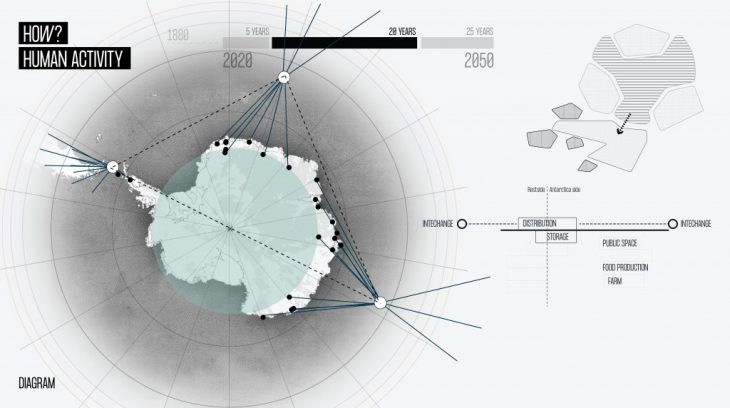
“Cleaning” Antartica
Finally in 2050 Antarctica would be clean and the Antarctica islands would have reached a completion, having not just what mentioned before but potentially allowing branches development and the appearance of infrastructures like energy production, waste management and even thematic parks that would “take” Antarctic tourism.
Thanks to this intervention Antarctica would reborn.
////
Year 2050
But I am pessimistic and by 2050 problems that we cannot even imagine would face civilization and the planet itself.
Let’s assume we haven’t been able to achieve the recovery of the planet and that we are facing an “extinction era”. Temperature has risen over the planet and the last livable place on Earth is Antarctica. Do we take Antarctica back and start creating civilization on it until the planet just switch off? Maybe we migrate to Mars and start a new life? Or we rather die, accepting the guilt of our acts? What if on that last era of civilization those Antarctica research bases could grow, multiply and create a network of cities where most of the population (the ones that don’t go to Mars) could live?
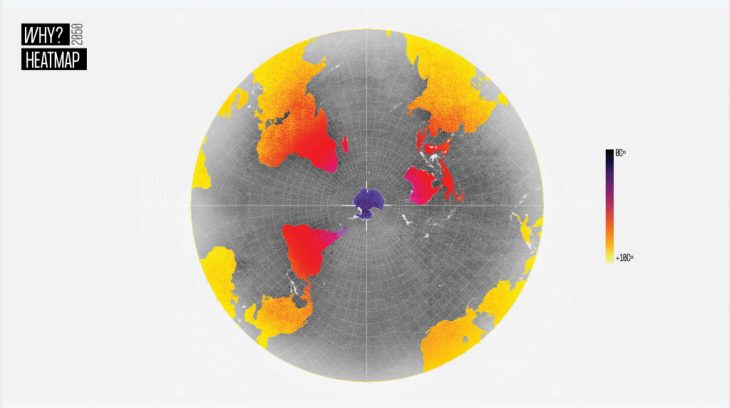
Heat Map 2050
Antarcity
What could be the shape of these cities? How could the invisible forces of the sea give shape to these on the sea? We imagine a heterogeneous environment where every branch might be made of a different resources. For instance, sunk cruises could be reused to create part of it or the reutilization of plastic found in the ocean could be the base to develop further habitats. We also think these city would need to be in symbiosis with the surroundings, mostly with the ecology of the place and not disturb but boost the living cycle towards a more circular one.
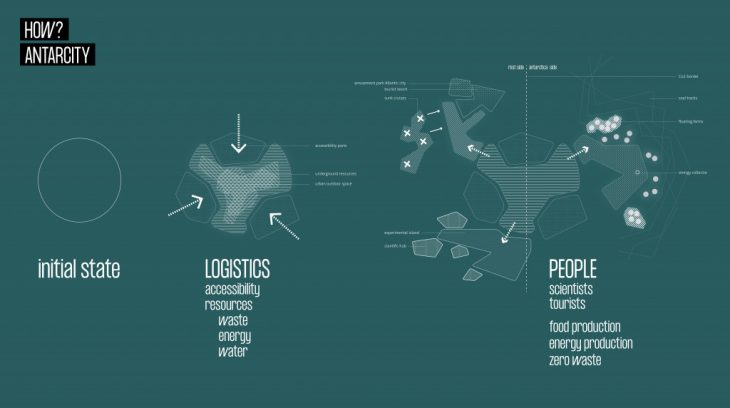
City Design
Examples of these can be seen in different projects like the Floating city from BIG architects, Floating Blue 21 by Delta Sync or the French Polynesia by the Seasteading Institute. We imagine in a series of logograms how the actual cities could develop their own new identity on the water and develop a series of visualizations.

Water Cities
This could be the new city of Antartica.
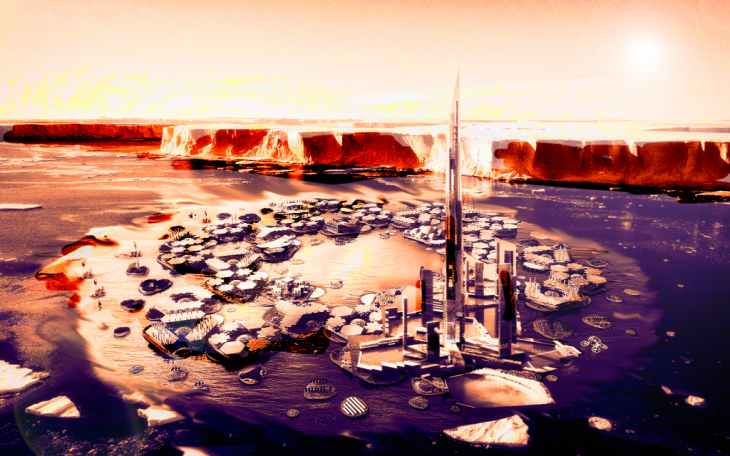
City of Antartica 2050
Although dystopian this projects seeks a reaction and raise of awareness. It aims to provoke and create a critical reflection about the current state of Antarctica and the importance towards a better future.
ANTARCITY is a project of IaaC, Institute for Advanced Architecture of Catalonia
developed at Master in City & Technology in (2019/2020) by:
Students: Byron Cadena, Alejandro Quinto
Faculties: MANUEL GAUSA & NICOLA CANESSA